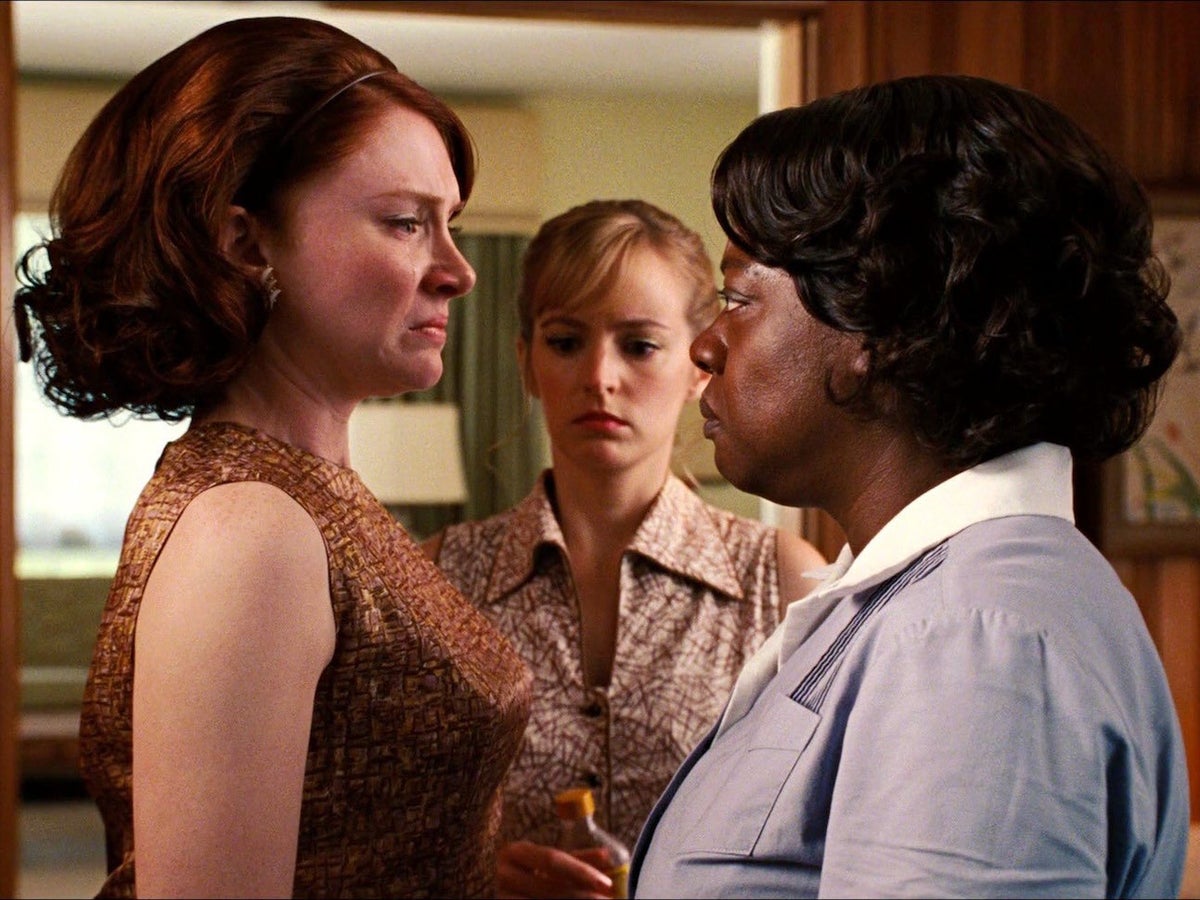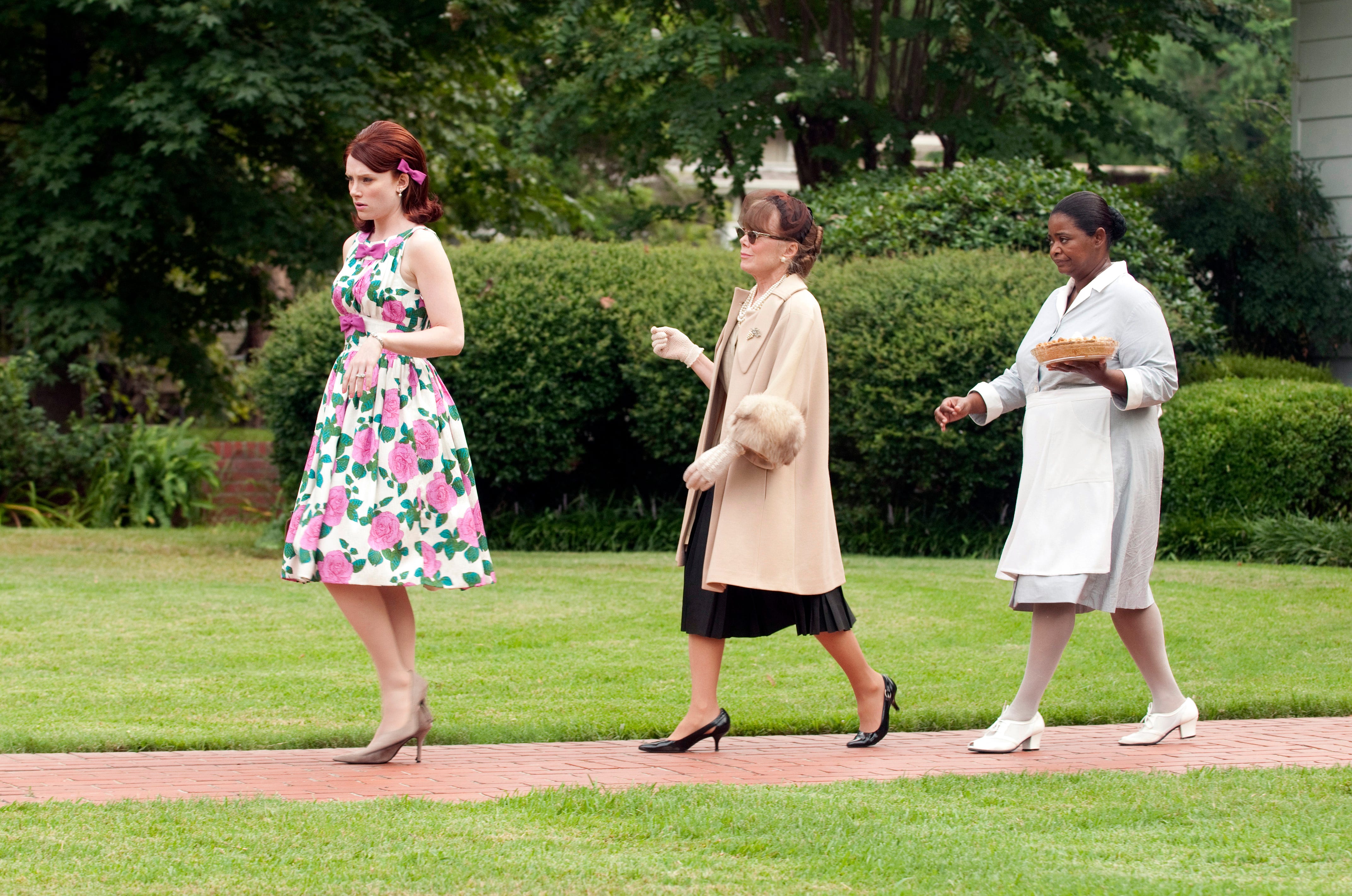The Help - Characters
Aibileen Clark: Aibileen's heart is so big, we just might all fit inside it. If you're lucky.
Minny Jackson: Minny and Aibileen are the two primary women representing "the help" Eugenia
"Skeeter" Phelan: Skeeter Phelan is a bundle of contradictions. She's a 23-year-old white woman.
Hilly Holbrook: Hilly is the novel's most dastardly villain. She's married to William
Holbrook. Elizabeth Leefolt: Like her best friend Hilly, Elizabeth falls squarely into the villain category.
Mae Mobley Leefolt: Let's start off with a few facts on the girl. Mae Mobley is two years old when The Help opens.
Celia Rae Foote: Celia is an endearing character.
Johnny Foote: Johnny is a bright light in the novel. He’s part of the society that oppresses people.
Constantine Bates: Constantine is a beloved and tragic figure. Lulabelle Bates: Lulabelle is Constantine's daughter and she's about Skeeter's age.
Robert Brown: Robert Brown was friends with Aibileen's son Treelore. Louvenia Brown:
Louvenia is Robert Brown's mother and one of the women whose story goes into Help. Yule May Crooked
Yule May is a college-educated woman. She's also Hilly Holbrook's maid.
Miss Fredericks: Miss Fredericks is Elizabeth Leefolt's mother.
Mister Golden: Mister Golden is the editor of the Jackson Journal. He gives Skeeter her first job, as a writer.
Leroy Jackson: Leroy is Minny's husband. He physically abuses her on a regular basis,
Reverend Johnson: Reverend Johnson is the Reverend at Aibileen and Minny's church.
Charlotte Phelan: Charlotte is Skeeter's mother and another ambiguous character.
Carlton Phelan: Skeeter's father believes in racial equality and is not afraid to tell it to the likes of the Senator.
Elaine Stein: Elaine Stein is the literary agent who publishes The Help and who connects Skeeter with a job.
Treelore: Treelore is Aibileen's son who died a little over two years before the novel opens. Miss
Walter(s): Miss Walter or Miss Walters is Hilly's mother.
Stuart Whitworth, Jr.: Stuart is Skeeter's love interest. He's not a terrible guy, just a spineless one.
The Help – Plot Analysis
Setting and exposition:
The Help is set in August 1962 in Jackson, Mississippi. The book is about the lives of three women living in Jackson right around when the Civil Rights movement began.
Rising Action:
Skeeter learns that Aibilin's only son Treelore die. He wanted to write about a black man growing up in Mississippi. This triggers Skeeter wanting to write a book about black maids working for wealthy white families in Mississippi. Then Skeeter asks Aibilin to help her with the book she wants to write. Aibilin refuses because she is scared of the las against black people but eventually she agrees. She suggests one of her friends Minny helps too. Hilly accuses Yule May (a maid) of stealing and is sent to jail. The maids are upset at Hilly and over ten of the black women decided to help Skeeter to write her book. Aibilin, Minny, Skeeter, and a lot of other maids worked really hard in the book.
Climax
The climax of the story occurs when the maids come together to help Skeeter to write her book about the life of black people by providing their personal life experiences. Also, when the book is published and Hilly confronts Aibilin about the book.
Falling action
The falling action is when Aibilin leaves Mae Mobley and she repeats to her that she is kind, smart, and important.
Resolution:
Aibilin is finally free to start over a new life without working as a maid
Conflict
The conflictof the novel is during segregation, the friction between blacks and whites is what creates the novel. One of the main conflicts is segregation, there is a big conflict between two prominent characters, Hilly and Skeeter, wealthy white women. Some of the themes in this novel lie in the location and social aspects of living in a small southern town at the time.
The social groups on which this novel focuses are white housewives, whose group consists of Skeeter, a farmer's daughter, who has just returned from college, and "The Help" or a group of servants who are , descendants of African Americans. The Help is forced to obey their irrationally needy bosses, cooking for them, cleaning for them, and even raising their children, only to be treated inhumanely and unfairly by the housewives.
For example, one of the housewives, Hilly Holbrook, a seemingly contentious character alone, was very suggestive of enforcing a bathroom law, which made it mandatory for every household to have a separate bathroom for her help as a "safety precaution." security" because they could transmit diseases through their body fluids. In situations like these, African Americans were very knowledgeable and really showed the gap in reality between the two groups. This, in turn, caused conflict between them, as African-Americans were looked down upon by whites and African-Americans viewed whites as threatening and evil-minded.
Whites often refer to blacks with descriptions of animals to build a barrier between them. Much of the conflict is built around the ignorance of whites towards blacks. The conflict between The Help and the housewives emphasizes the issue of segregation. The author, Kathryn Stockett, was trying to accurately recreate the injustices of racism.
#Gabriela Aguilar
Racism
Racism is manifested in the lives of black
maids in different ways there are no openings for education, being exposed to
social dispatches that they're sick with contagious conditions not carried by
whites, and suffering under rude and vituperative employers that believe people
of different races are biologically different Hilly, for illustration, obsesses
over restroom sanitation, calls the maids"Nigras" and treats domestic
workers cruelly. Racism is passed through generations by education since
children don't make difference with the maids until they're young. On the
other hand, Miss Skeeter risks prodding the violent wrathfulness of her
community by helping the maids publish their stories about working for white
families. Skeeter tries to see the world through the eyes of the maids and
makes the rather egregious consummation that they too are precious humans with
the same capacity for emotion and intelligence as her white peers. By feting
the essential humanity of these women, Skeeter comes to realize that the
institutional laws and social practices that separate people grounded on race
are unethical and innovated on a social frame of falsehoods and exploitation.
Social circles
The connections between womanish characters
in the book are defined nearly simply by their social circles. From the opening
of the novel, it's clear that Hilly is the social lynchpin, the" queen
freak"the rest of the women fawn over. She calls the shots, organizes
League events, sets up dates, sways fiscal opinions, and eventually instructs
her musketeers to fire or discipline their maids. Despite Hilly's temper and
manipulation, utmost of the white womanish characters define themselves through
their relationship with her. The women do not treat each other kindly, and more
importantly, they are not open or honest with each other. In discrepancy, the
African American womanish social circles are depicted as loving, trusting, and
necessary for survival. The most prominent fellowship is between Aibileen and
Minny. They partake in the secret of Skeeter's design, but they watch for each
other in times of deep vulnerability.
Part of women
Southern society expects women to fulfill a
specific domestic part — marry youthfully, take care of the house, and have
children. Women aren't only anticipated to abandon career hobbies or cultural
dreams, they are also anticipated to want to do so. For African American women,
prospects are indeed narrower. During her interviews, Aibileen reveals that she
grew up knowing she'd come to be a maid. She noway had bournes to come anything
differently. Also, Minny knew she'd come to a maid and knows her daughters will
follow the same path. They, too, will leave the academy and concentrate on maintaining
a home, albeit for a white woman. While white women are anticipated to immolate
their ambition for the sake of feminity, African American women are anticipated
to give up their health, safety, and in some cases their own families in
immolation to white feminity.
#Adriana Romero
Symbols
• Minny’s "special ingredient" pie
Minny is proud of her baking skills and she is so famous because of her chocolate custard pie. One day Minny makes a chocolate custard pie including the “special ingredient” of her own feces, and watches Hilly savor two slices of it before telling her the truth. Minny humiliates and degrades Hilly as an act of revenge, but also gains a kind power over her. Now Minny has something to hold over Hilly’s head, a secret she can reveal if Hilly continues to spread rumors about her.
• Bathrooms
Many white people in the novel believe that black people carry unique diseases that can be transmitted to others by using the same toilet seat. Miss Hilly uses this blatantly racist belief to convince other white women to build separate bathrooms for their black maids. In this way, segregated bathrooms represent the private beliefs and social practices that reinforce and expand institutional segregationist laws.
#Gabriela Aguilar









No hay comentarios:
Publicar un comentario